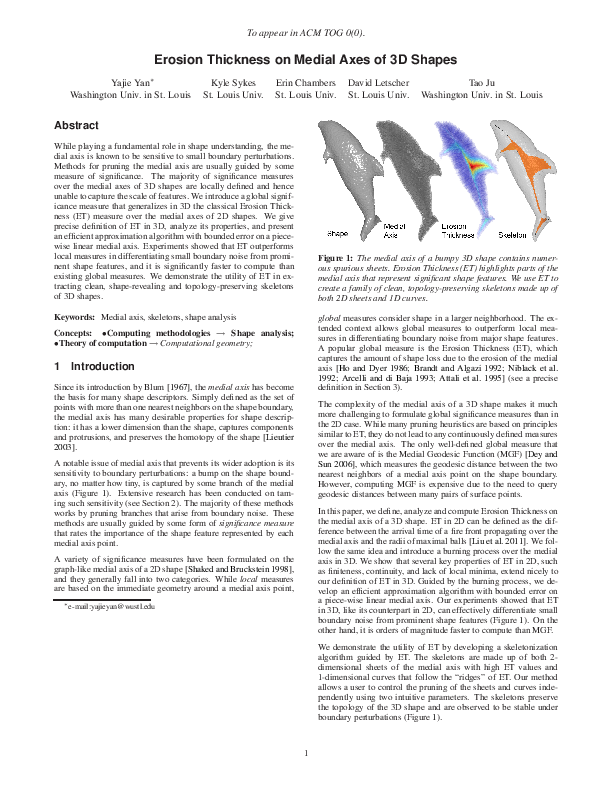

Compiling the project with Qt 5.12.6 instead of 5.7.0 (~40GB install) is relatively easy. - EtDev.sln: replace qt5.7_msvc2015 by qt5.12_msvc2017 - EtDev.vcxproj: replace Qt5Version_x0020_x64="qt5.7_msvc2015" by Qt5Version_x0020_x64="qt5.12_msvc2017" - EtDev.vcxproj.user: replace C:\Libs\Qt\Qt5.7.0\5.7\msvc2015_64 by the actual path of your Qt install (e.g., C:\Libs\Qt\5.12.6\msvc2017_64). - trimesh/include/Vec.h, line 819: #if (_MSC_VER != 1900) should be replaced by #if (_MSC_VER <= 1900) The program compiles and produces the same executable as the one provided on the author website. It is however not very easy to use, and it is undocumented. The startup is intuitive (load the hand medial axis, model and radius files provided in the sample data), but then parameter tuning and what steps need to be performed were not trivial to find. I managed to produce a clean hand skeleton nevertheless that somewhat looks like results shown in the paper. I assume the .r file contains a radius for each vertex of the medial axis .off file, so that should be relatively easy to produce given a medial axis code (not provided). While results were convincing on the hand model, models used in the paper are not provided.
If you want to contribute with another review, please follow these instructions.
Please consider to cut/paste/edit the raw JSON data attached to this paper.